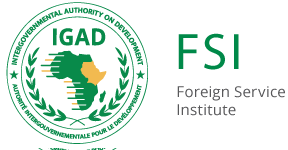International Economics
September 1, 2022 2022-09-01 7:25International Economics
International Economics
Requirements
- Attended Foundations and Skill Development Courses
Course Objectives:
- to provide participants with the basic concepts and tools for understanding and analysing most of the challenges of international economic relationships both about trade in goods and services (real part) and in financial and macroeconomic aspects allowing for imbalances in trade of goods and services (monetary part)
- to get a clear argumentation about the costs of trade protectionism in comparison with those of trade openness
- to develop a “political economy” approach i.e., to explain the causes and consequences of trade policy measures with respect to the vested interests of the different social and economic groups involved in these decisions
- to give a historical and an analytical perspective in the basic principles upon which relies the growing opening between economies, as well as the resistance to this trend and the present return to some degree of trade protection.
- To explain the determinants of the external accounts of an economy (balance of payments) and those of exchange-rates fluctuations or the need for parity adjustments
- To understand the external adjustment mechanisms in case of disequilibrium in current account of the balance of payments and in consequent exchange-rate movements or devaluation.
- To understand that the current account balance can also be the result of the net flows of external capital.
Course Outcomes:
- Identify the trade measures that could spur economic development and the necessary conditions for their effectiveness
- Understand the hidden “rent-seeking” behaviour of some interests behind protectionist measures adopted under the argument of general interest
- Explain the reasons for the possibility of better intervention policies (in terms of economic costs) than to put direct obstacles to imports for developing a sector of an economy
- Present the arguments (advantages and inconvenient) of the possible options for the choice of an exchange-rate regime for your economy
- Analyse any balance of payment disequilibrium, identify their degree of sustainability and if not, propose adjustment tools with their respective advantages and disadvantages
- Demonstrate ability for critically reflecting on social consequences of alternative policy tools
Curriculum is empty

